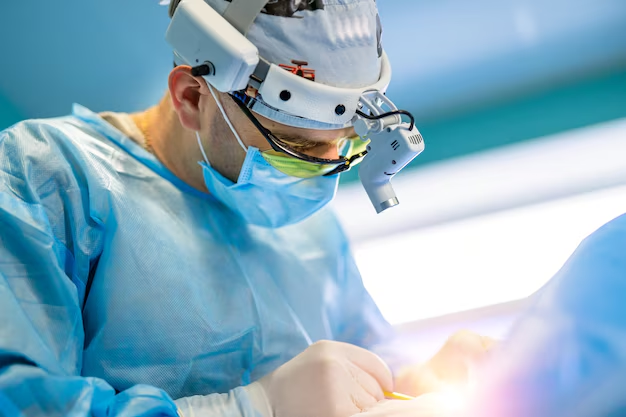Enhancing Near Vision After Cataract Surgery: A Practical Guide
Imagine seeing the world through a foggy window—everything is blurred and unclear. This is how many people describe their vision before undergoing cataract surgery. Thankfully, advances in medical technology have made cataract surgery a highly effective way to restore clear vision. However, some individuals may experience challenges with their near vision after surgery, sparking questions about what can be done to improve it. This comprehensive guide explores strategies and considerations for enhancing near vision post-cataract surgery.
Understanding Cataract Surgery and Its Impact on Vision
Cataract surgery involves removing the cloudy lens of the eye and replacing it with a clear artificial lens, known as an intraocular lens (IOL). The surgery is primarily aimed at restoring clear, distance vision. However, while most people experience a significant improvement in their overall vision, near vision—such as reading or working on a computer—might not be as clear immediately after the procedure.
Types of Intraocular Lenses (IOLs)
The type of IOL implanted during surgery can greatly influence near vision post-procedure.
Monofocal IOLs: Designed to provide clear vision at one distance only—typically set for distance. This means that patients will likely need glasses for near tasks like reading.
Multifocal IOLs: Created to offer multiple focal points, allowing for both near and distance vision. While they reduce dependence on glasses, they may cause visual disturbances such as halos around lights.
Accommodative IOLs: These lenses can move inside the eye, attempting to provide a more natural range of vision. They offer a compromise between monofocal and multifocal capabilities.
Extended Depth of Focus (EDOF) IOLs: These newer lenses aim to extend the range of clear vision, offering a middle ground with fewer visual side effects.
Choosing the right IOL is a critical decision that should be made in consultation with an eye care professional.
Strategies to Enhance Near Vision Post-Surgery
Achieving the best possible near vision is often a combination of the right choice of IOL and lifestyle adaptations. Here’s how you can make the most of your near vision after cataract surgery:
1. Glasses and Contact Lenses
Reading Glasses: Simple and effective, reading glasses can be used for tasks that require close-up focus. They are affordable and available without a prescription.
Bifocal or Progressive Lenses: These provide a seamless transition from distance to near vision and can be tailored to your specific visual needs.
Contact Lenses: Multifocal contact lenses can also be a good option for some individuals, offering a correction for both distance and near vision.
2. Vision Exercises
Some experts suggest exercises to help improve near vision. These exercises don't offer quick fixes but can strengthen eye muscles and improve focus over time.
Focus Shifting: Alternating focus between a distant and near object can exercise the eye’s accommodation ability.
Reading Small Print: Daily practice of reading small print without assistance can gradually improve visual acuity at short distances.
3. Environmental Adjustments
Creating a visually ergonomic space can optimize near vision demands:
Proper Lighting: Ensure adequate lighting to reduce strain. Position lamps to minimize glare and shadows.
Magnifying Aids: Use magnifying glasses or aids for tasks that require detailed attention, such as needlework or reading fine print.
Screen Settings: Adjust computer or smartphone settings to increase text size and reduce strain.
Utilizing Modern Technology
Advancements in technology offer innovative solutions to enhance near vision.
1. Laser Vision Correction
For some, laser vision correction may offer a solution for residual refractive errors post-surgery. It can adjust the corneal shape to improve both distance and near vision, but isn't suitable for everyone.
2. Specialized Eyewear
High-tech eyewear, like digital reading glasses, can help individuals adjust vision settings per their needs. However, these may be on the pricier side.
3. Mobile Apps
Mobile applications designed to enhance visual skills and provide eye exercises can be both entertaining and beneficial.
Key Considerations for Improving Near Vision
When looking to improve near vision after cataract surgery, it's essential to consider the following:
Realistic Expectations: Understanding the limitations and capabilities of your chosen IOL and other options ensures satisfaction and prevents unexpected surprises.
Lifestyle Compatibility: Consider daily activities and hobbies that could impact the choice of vision correction strategy.
Individual Preferences: Personal comfort and convenience often determine the choice between glasses, contact lenses, or advanced solutions.
Summary of Practical Tips for Better Near Vision
Here’s a quick rundown of proactive steps to enhance near vision post-surgery:
- 🕶️ Use bifocal or progressive glasses for a seamless transition between distances.
- 📚 Engage in reading exercises to strengthen near vision.
- 💡 Optimize lighting to reduce eye strain.
- 🔍 Employ magnifying tools for detailed tasks.
- 🔧 Adjust screens for comfort and clarity.
These strategies can be combined and customized based on individual needs, ensuring near vision that complements overall visual functionality.
Closing Insight: Embrace the Journey to Clear Vision
Recovering near vision prowess after cataract surgery is a journey that may require a blend of medical insights, technological aids, and lifestyle adaptations. By understanding your options and embracing the support tools available, you can enjoy a fulfilling visual experience that enhances your day-to-day activities. While the path might require adjustments and patience, the reward of clear vision—both at a distance and near—is indeed worth the effort.
Always confer with an eye care provider to tailor these approaches to your personal visual health needs, ensuring a clear and vibrant outlook on life after cataract surgery.
